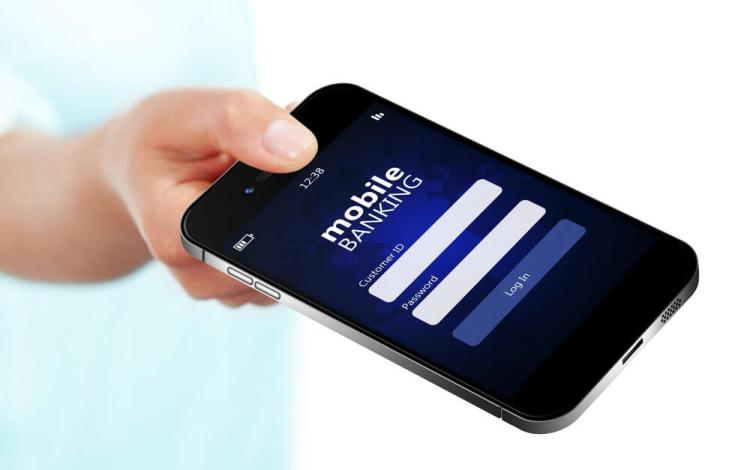If banking is something you do on an app, why shouldn’t your mobile carrier actually be your bank? It’s more than just an idea. Orange, Telenor, and O2 are all building their own operations.
In the UK alone, people use mobile banking apps more than 7,610 times a minute, or 4 billion times a year.
According to the “Way We Bank Now” report by the British Banking Association, they downloaded more than 13.8 million banking apps in 2015, up 25 percent from 2014.
All over the world people are switching away from branch-based banking, and even desktop Internet banking, to manage their financial lives through an app.
Why wouldn’t they? There’s no need to go anywhere. The user interface is typically better than it is on a PC. And the addition of biometrics (typically fingerprint) makes signing in so much easier and safer than passwords.
Of course, banking apps are made by banks. The carriers just provide the data packages that allow people to use use them.
But in the last year, a small number of European carriers have come to a radical conclusion: Let’s do more than just enable mobile banking apps; let’s build our own.
Orange has made headlines recently for just this reason. Earlier this year, it moved to acquire Groupama Banque, enabling it to leverage its banking license and benefit from its existing client network, thereby creating its own banking operation. Now, authorities in France and Europe have approved the deal.
Groupama Banque is currently owned by insurance firm Groupama. When the deal is completed, Orange will own 65 percent of it. Thus, the telco will be able to launch Orange Bank in France in January 2017, with Spain and Belgium to follow.
Actually, Orange already has some experience in the area. In October 2014, it launched Orange Finanse as a joint venture between mBank and Orange Polska. It’s not alone. O2 Germany launched a bank with Fidor in July, while Telenor is two years into its Banka Serbia launch.
Other operators are experimenting. Telefonica Spain announced a joint venture with CaixaBank and Santander, while in the US, T-Mobile launched a Visa card with banking features linked to a smartphone app (though it is now being wound down).
Needless to say, financial services are nothing new for mobile operators. In developing markets, they have launched text-based mobile money systems that have transformed the lives of millions. Vodafone’s M-Pesa has 25 million customers and 261,000 agents in 11 countries.
Meanwhile Orange has its own Orange Money service, which launched in Ivory Coast in 2008 and has 18 million customers in 14 countries across Africa.
In mature markets, the emphasis has been on NFC payments. The typical model was a contactless wallet app, with account credentials stored in the secure element of a SIM card. There were numerous launches — Softcard (US), Valyou (Norway), Buyster (France), SixPack (Denmark), and so on. Most have closed.
So why would operators switch focus to banking? The simple reason is that they believe they can build new and intuitive products. Why? Because they are mobile-first.
The theory goes that banks have a tendency to approach new mobile services by layering them on top of legacy IT systems. By contrast, operators should have the know-how to build much better mobile experiences that are consumer centric.
So O2 Banking customers can, for example, sign up via a video chat session with an agent. They can have a current account with a free MasterCard inside five minutes. They can also earn rewards of mobile data rather than pennies of interest.
Telenor Banka in Serbia launched in September 2014. It carefully targeted “premium” tech-savvy customers and cultivated them as brand ambassadors and to quickly spread the word on social media. By summer 2016, the bank had 180,000 customers (the biggest traditional bank in the country has 500,000 mobile users).
The Telenor Banka app was built around specific “pain points” such as currency transfer. In Serbia, people like to transfer their dinars for euros. Typically, they queue to do so with an agent, then queue again at the bank to deposit the cash back into their accounts. Telenor Banka lets them do the same in two clicks inside the app.
Users can also activate and deactivate their cards from inside the app. This helps people combat online fraud as they can “turn off” their cards apart from when they are actually making a payment.
All these launches are indicative of a dynamic moment in banking. Technology is making it easier for digital-only challenger banks (including mobile operators) to launch rival products. Regulation is helping too. The EU Payment Services Directive 2, coming into force in 2018, mandates that banks must open up APIs so that third parties (with user permission) can have access to account information.
In its Essentials 2020 review, Orange set a target of making €400 million ($435 million) from financial services by 2018. This compares to overall group revenues at Orange of €10.3 billion ($11.2 billion) in the third quarter of 2015 alone.
This is ushering in the idea of “banking as a marketplace,” which operators are keen to leverage. Here, banking apps offer account services but also act as a mini mall in which users can “shop” for foreign exchange, insurance, loans, and so on from specialists.
For telcos, it’s an opportunity to experiment with new customer centric business models while delivering CRM and achieving churn reduction. For banks and other key players in financial services, it’s a call to action to leverage their own assets in a way that creates value for the discerning mobile consumer.
Rimma Perelmuter is CEO at global mobile trade body MEF.
VentureBeat's mission is to be a digital town square for technical decision-makers to gain knowledge about transformative enterprise technology and transact. Learn More

